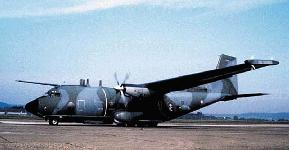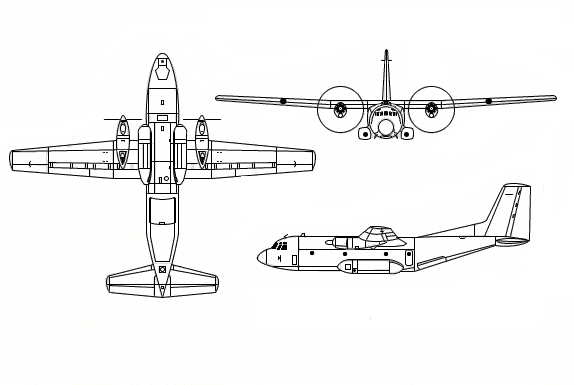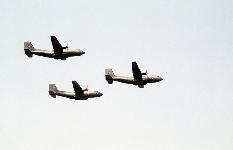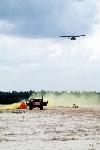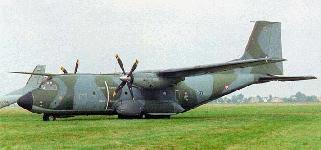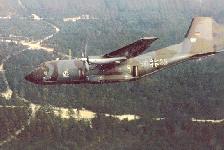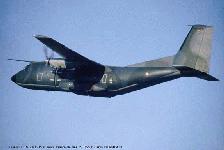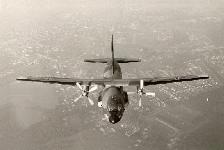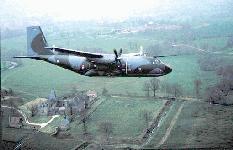Specifications | |
| Country of Origin | France, Germany |
|
Builder team : |
Transall : French-German co-operation Aerospatiale - DASA MBB New Transall : Aerospatiale / Atelier Industriel de l�Aéronautique de Clermont-Ferrand |
|
First flight : |
February, 1962 (first batch) / April, 1981 (second batch) |
|
In-service in French Air Force : |
August, 1967 for the C 130 F (first batch) / April, 1982 for the C 130 NG (second batch)/ May, 1994 for the C 160 R (retrofited avionics for both batches) |
| Role | Transport, cargo (93 equipped troops, tactical vehicles), airdrop, EW, surveillance, airborne command |
| Similar Aircraft | G.222, C-123 Provider, Aviocar C-212, C-130 Hercules, An-12 Cub |
| Wing Span | 131 ft, 3 in (40 m) |
| Length | 106 ft, 3 in (32.4 m) |
| Height | 11.67 m |
|
Net weight / Maximum weight at takeoff : |
29 t / 51 t |
|
Fuel capacity : |
19,500 l at takeoff / 26,000 l after in-flight refuelling |
|
Power plant / Thrust : |
Turbo-prop Rolls-Royce Tyne 22 / 2 x 5,665 HP |
| Maximum speed | 515 kph at 16,000 ft |
| Cruising speed | |
| Range | |
| Service Ceiling | 26,000 ft |
| Armament | Usually none |
|
Special equipment : |
Computer-operated navigation with inertial navigation system and GPS, communication system with central command |
|
Crew : |
2 pilots, 1 navigator, 1 engineer, 1 cabin operator |
|
Major operational capabilities : |
Night tactical flights at low altitude with night vision goggles Transport of passengers and freight to short and ill-prepared fields |
|
NATO interoperability : |
Protected radiocommunications, identification friend or foe |
| Cost | |
| User Countries | France, Germany, South Africa, Turkey |
|
Number of units produced : |
122 (including 66 retrofited for France) |
|
French Air Force inventory : |
66 (including 42 in 4 tactical transport squadrons) |




